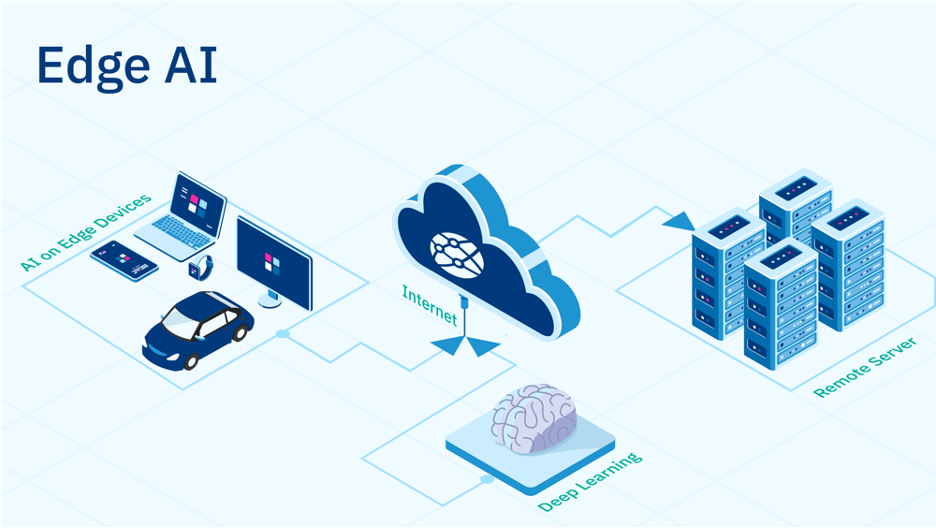Introduction
Smart cities represent the next evolution of urban living, where technology seamlessly integrates with infrastructure to improve efficiency, sustainability, and quality of life. From intelligent traffic systems to predictive waste management, smart cities rely on real-time data processing to function effectively. However, as urban environments generate enormous volumes of data every second, sending all of it to the cloud for analysis is neither efficient nor sustainable. This is where Edge AI the combination of edge computing and artificial intelligence comes into play. In 2025, Edge AI is becoming the backbone of smart cities, enabling faster, smarter, and more secure urban systems.
Table of Contents
What Is Edge AI?
Edge AI refers to the deployment of artificial intelligence models directly on edge devices such as sensors, cameras, or local servers rather than relying solely on centralized cloud systems. By processing data close to where it is generated, Edge AI reduces latency, bandwidth usage, and dependency on constant internet connectivity. For smart cities, this means decisions can be made locally and instantly, allowing critical systems like traffic management, energy distribution, and public safety to function autonomously and reliably.
Edge AI operates by combining machine learning algorithms with edge computing hardware. Devices equipped with AI chips or accelerators can process and analyze data in real time, without needing to send it to distant cloud servers. This not only speeds up response times but also enhances data privacy, since sensitive information does not have to leave the local network.
The Role of Edge AI in Smart Cities
In modern smart cities, Edge AI is driving innovation across multiple domains. One of the most significant applications is in intelligent transportation systems. AI-powered cameras and sensors installed on roads can monitor traffic flow, detect accidents, and optimize signal timings in real time. This reduces congestion, lowers emissions, and improves road safety without relying on human intervention or cloud-based control systems.
Another key area is energy management. Smart grids equipped with Edge AI can predict energy demand patterns, balance supply dynamically, and integrate renewable energy sources efficiently. By processing data locally, these systems can instantly respond to fluctuations, ensuring stable power distribution across the city.
Benefits of Edge AI for Urban Infrastructure
The integration of Edge AI into city infrastructure brings several transformative benefits. The most immediate advantage is speed. Since data processing occurs locally, decisions can be made in milliseconds, which is crucial for systems like traffic control and emergency response.
Reliability is another major benefit. Smart city operations cannot afford downtime due to network failures or cloud outages. Edge AI ensures that essential services continue to function independently, even when internet connectivity is disrupted.
Data privacy and security are also significantly enhanced. By limiting the transmission of sensitive data to the cloud, the risk of interception and unauthorized access is minimized. Cities can maintain compliance with data protection regulations while still leveraging AI-driven insights.
Lastly, Edge AI offers cost efficiency. Continuous data transmission to the cloud can be expensive due to bandwidth and storage requirements. Local processing reduces these costs while maintaining high analytical performance.
Challenges and Limitations
Despite its potential, Edge AI faces certain challenges. Implementing large-scale edge networks across a city requires significant investment in hardware, connectivity, and maintenance. Managing thousands of distributed devices and ensuring their synchronization can be complex. Moreover, AI models deployed on edge devices often need to be lightweight, as they operate under limited computational resources compared to powerful cloud servers.
The Future of Edge AI in Smart Cities
As technology continues to evolve, the synergy between Edge AI, 5G networks, and the Internet of Things (IoT) will further strengthen. 5G’s ultra-low latency and high-speed connectivity will enhance edge device performance, enabling even more advanced real-time applications. AI models will become more efficient through innovations in neuromorphic computing and federated learning, allowing edge systems to learn collaboratively without sharing raw data.
Conclusion
Edge AI is redefining how cities operate, offering faster respnses, improved efficiency, and stronger privacy protections. It allows urban systems to think, learn, and act locally, creating environments that are not just smart but truly intelligent. As more cities embrace this technology, urban life will become safer, cleaner, and more connected. Also Check Role of Nanotechnology – Ultimate Guide 2025







1 thought on “How Edge AI Is Powering the Future of Smart Cities 2025”